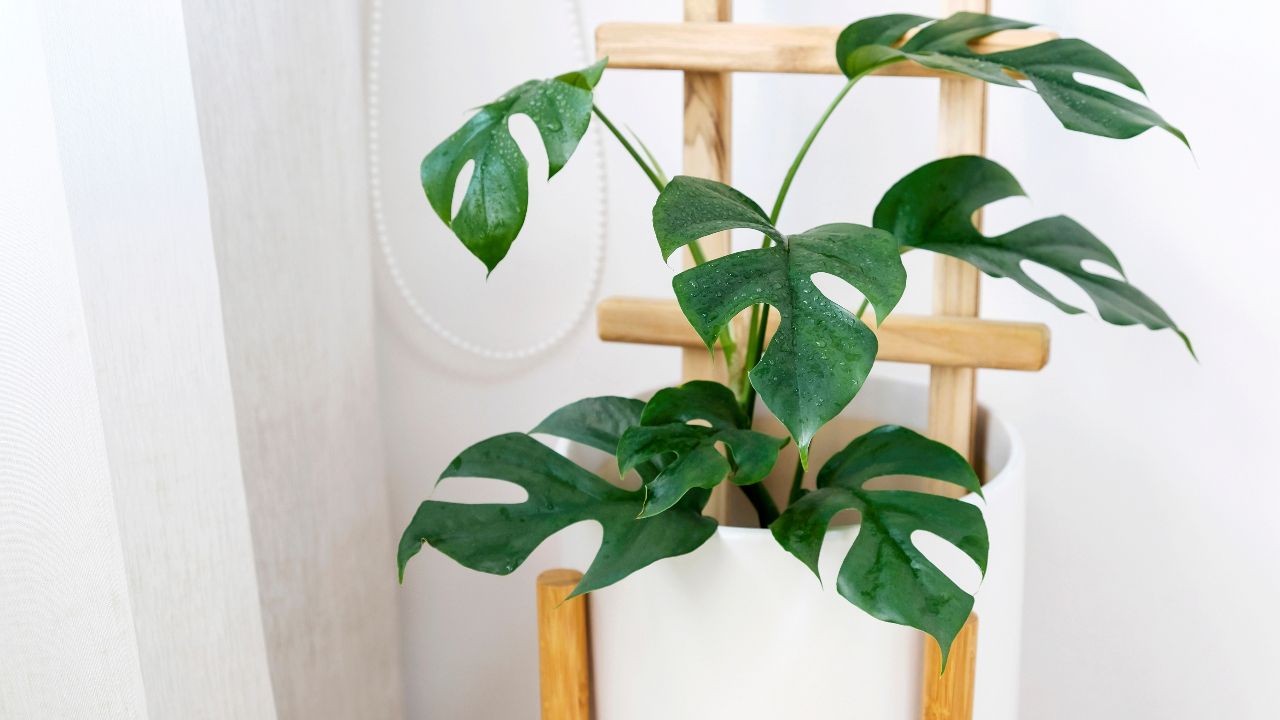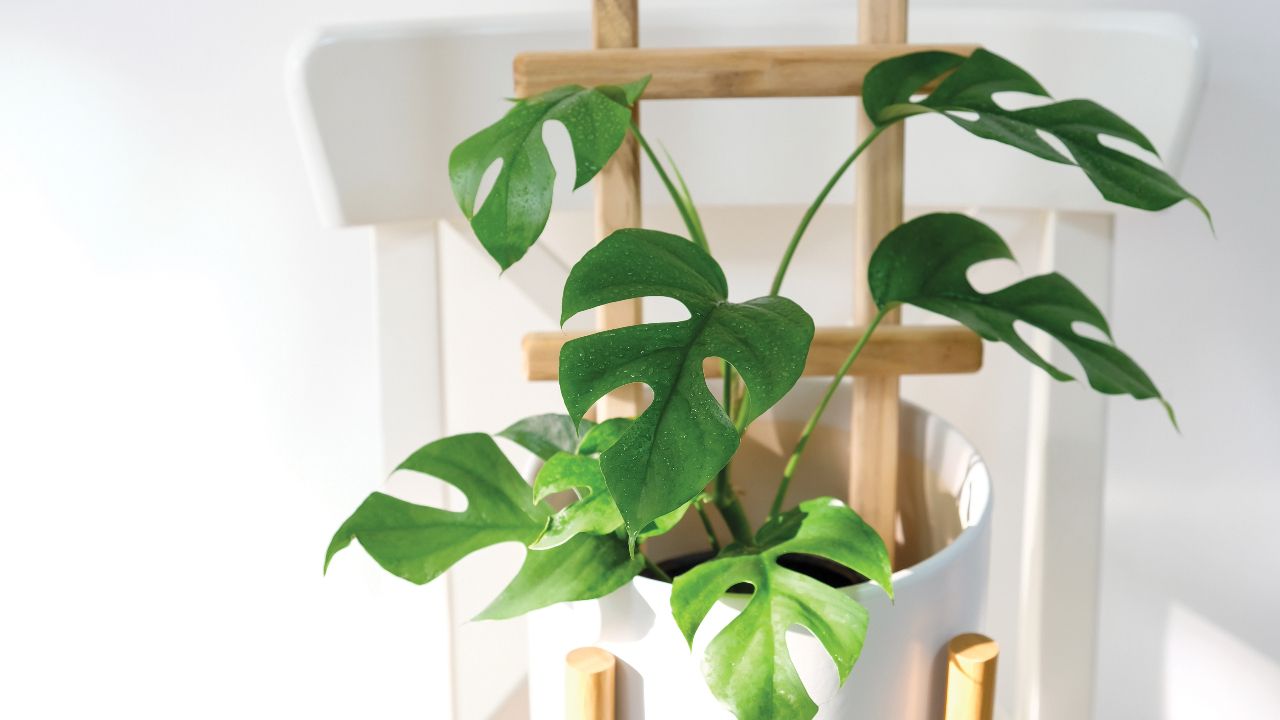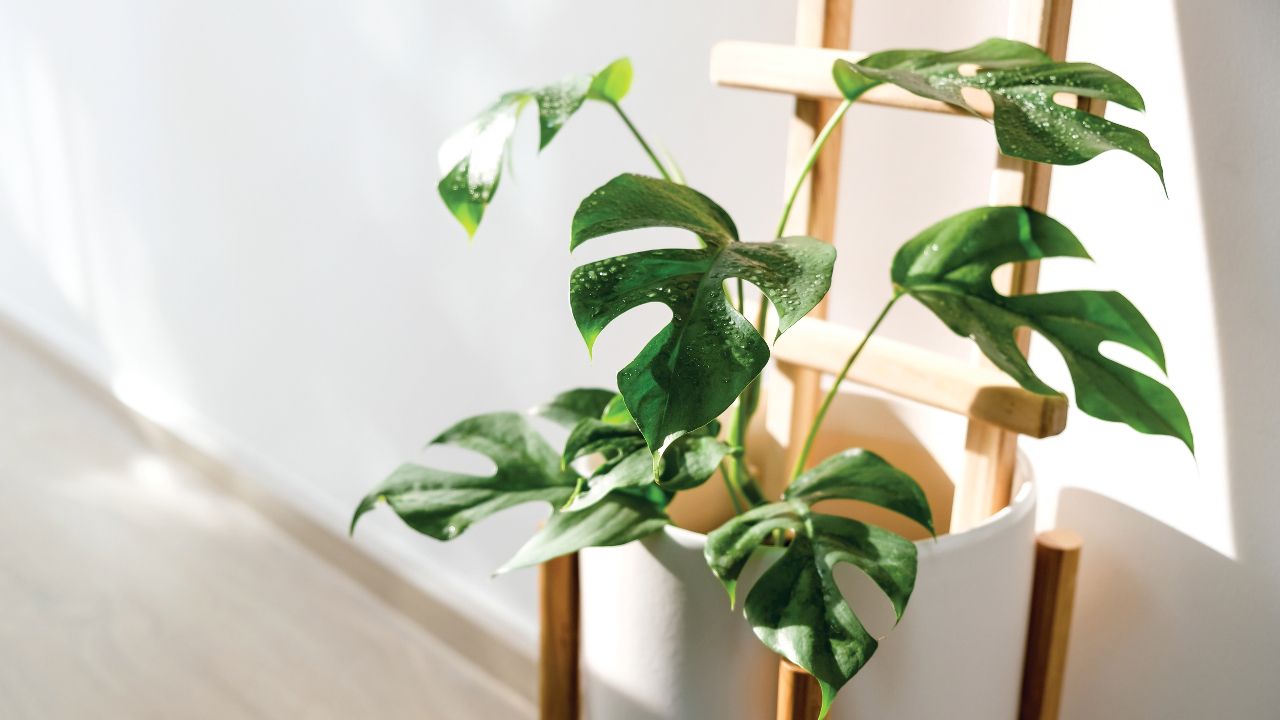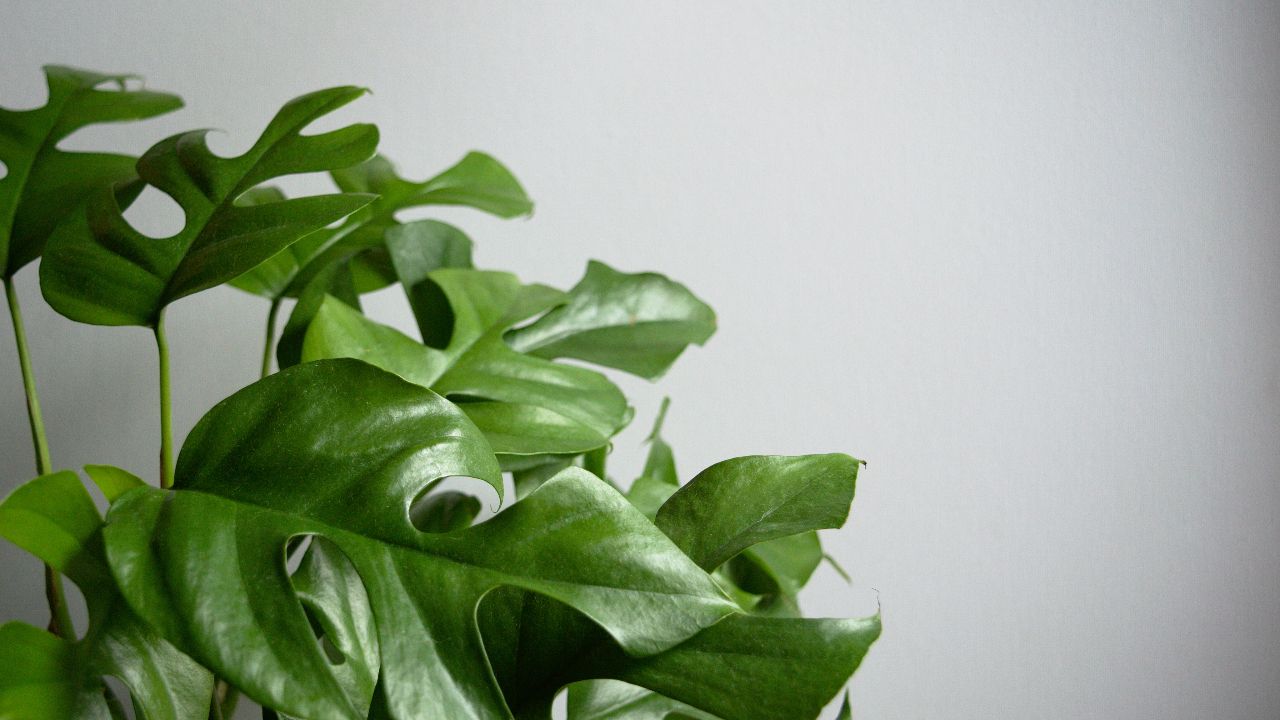
Are you smitten with the jungle-like aesthetic that Monstera Deliciosa brings but hesitant about its size? Meet its doppelgänger that fits neatly in your living space—the Mini Monstera, officially known as Rhaphidophora Tetrasperma. Don't be fooled by its common nickname; this lovely plant is not a Monstera at all but rather a closely related member of the Araceae family. While the Monstera genus captivates with its large, fenestrated leaves, the Rhaphidophora Tetrasperma plant offers a miniature yet strikingly similar version. It's a favorite among plant enthusiasts for a reason.
Join our newsletter
Stay on top of the latest in landscaping and lawn care with one valuable tip right in your inbox every Saturday morning.
At a Glance: Mini Monstera
- Botanical Name: Rhaphidophora Tetrasperma
- Common Names: Mini Monstera, Philodendron/Monstera "Ginny", Philodendron "Piccolo", Monstera Minima
- Family: Araceae
- Plant Type: Perennial Vine
- Mature Size: Indoors: 6-8 ft. tall, Outdoors: 15-20 ft. tall
- Sun Exposure: Partial
- Soil Type: Moist, yet well-draining
- Soil pH: Acidic to Neutral
- Bloom Time: Spring and Summer
- Flower Color: Green and White
- Hardiness Zones: 9b to 12b
- Native Area: Africa and Asia
- Toxicity: Toxic to both dogs and cats
Why Choose Mini Monstera Over Monstera Deliciosa?
If you're aiming to enrich your space with the lively aura of tropical plants without overwhelming it, the mini monstera makes an ideal choice. This rhaphidophora plant, native to the rainforests of Thailand and Malaysia, brings a similar lush vibe as its more famous relative but in a more manageable size. It’s just as breathtaking but doesn't require you to reorganize your entire room.
With its versatile foliage and easier adaptability to indoor conditions—such as bright indirect light—Rhaphidophora Tetrasperma is a winning pick for those who want beauty without the hassle. Stay with us as we delve into the must-knows of mini monstera care, from preventing root rot to choosing the right potting mix for healthy growth.
Understanding the Mini Monstera: An Overview of Rhaphidophora Tetrasperma Plant
Before diving into the care essentials, let's take a moment to appreciate the fascinating background of the Rhaphidophora Tetrasperma plant. If you've ever wondered why this particular plant has such unique features and adaptability, the answer often lies in its roots—literally and metaphorically.

Background and Origin
The Rhaphidophora Tetrasperma is native to the lush rainforests of Southern Thailand and Malaysia. Its natural habitat exposes it to varying degrees of indirect light, moisture, and a host of other conditions that make it a remarkably resilient houseplant. Its origin contributes to its ability to adapt to a wide range of environments, making it one of the easier tropical plants to care for.
In the wild, this rhaphidophora plant climbs tall trees and unfurls its split leaves, resembling those of its distant relative, the Monstera Deliciosa. However, the two are not from the same genus, a common misconception given their striking resemblance.
The Rhaphidophora Tetrasperma and the Araceae Family
This mini monstera is actually a part of the Araceae family, a large family of flowering plants known for their wide variety of forms, from philodendrons to peace lilies. Within this family, Rhaphidophora Tetrasperma holds a unique place. Its split leaves and rapid growth differentiate it from other family members, making it a unique specimen in a collection of already fascinating plants. It shares many of its growth habits and care needs with other Araceae family members, making it a somewhat familiar face for those already dabbling in the care of tropical plants.

Bright Indirect Light: The Mini Monstera’s Best Friend
When it comes to plant care, light is often the linchpin of success or the harbinger of demise. The Mini Monstera, or Rhaphidophora Tetrasperma, thrives in bright indirect light, but what does this term really mean? Understanding the nuances of light can make a world of difference in your plant's health.
What Is Bright Indirect Light?
Indirect light is sunlight that has been diffused or scattered in some way before reaching the plant. This could be through a curtain, bouncing off a wall, or even filtered through the canopy of other plants. In the context of bright indirect light, we are talking about a generous amount of this diffused light—enough to keep the plant well-lit but without the harshness of direct sunlight.
The science behind it is fairly straightforward: Plants require light for photosynthesis, the process through which they convert light into energy. However, not all plants have the same light requirements. Tropical plants like the Rhaphidophora Tetrasperma have adapted to the dappled sun that filters through the canopy in their natural habitat. Bright indirect light mimics this natural condition, promoting healthy growth while reducing the risk of issues like leaf burn from direct sun exposure.
How Bright Indirect Light Affects Mini Monstera Growth
Bright indirect light has a direct impact on the Rhaphidophora Tetrasperma's overall health and vitality. Here are some signs of what healthy growth looks like under these ideal conditions:
- Split leaves: Your plant will develop more fenestrated leaves.
- Bushier Plant: Expect a denser arrangement of leaves and maybe even the development of aerial roots.
- Active Growth: New leaves will emerge more frequently during the growing season.
On the other hand, if your Mini Monstera receives too little light, you may notice:
- Leggy Growth: Long stretches of stem with fewer leaves.
- Yellow Leaves: A sign often confused with overwatering or root rot, but in this case, it’s usually a light issue.
Recognizing these signs can help you adjust your care routine, ensuring that your plant not only survives but thrives.
Soil & Potting Mix: The Foundation of Healthy Growth
For many plant lovers, soil is often an afterthought. However, for the Mini Monstera, the soil you choose can significantly influence its health and growth. The Rhaphidophora Tetrasperma plant requires a specific soil type that allows for optimal water drainage and root aeration. So, what's the secret sauce for the perfect soil blend?
The Right Soil Composition
The ideal soil for your Rhaphidophora Tetrasperma should be well-draining to prevent issues like root rot. Heavy soil types that retain water for extended periods are a no-go. Look for a mix that includes ingredients like pine bark or orchid bark for added drainage.
Another critical component is peat moss, which helps keep the soil consistently moist but not waterlogged. When combined with well-draining elements, peat moss strikes a balance that promotes healthy growth and prevents sensitive roots from becoming waterlogged.

The Perfect Potting Mix Recipe
A well-crafted potting mix can be your Mini Monstera's best friend. Here's a simple recipe to get you started:
- 60% Peat Moss: For moisture retention
- 20% Orchid Bark: To promote drainage
- 10% Perlite: For added aeration
- 10% Compost: For essential nutrients
You can easily find these ingredients at your local gardening store. Mix them well and use a moisture meter to test the soil's water levels, especially during the growing season. Adjust the proportions as needed for your specific environment.
By taking the time to prepare the right potting mix, you're setting your Rhaphidophora Tetrasperma up for success. Soil is more than just dirt; it's the foundation that sustains your lovely plant's active growth throughout its life cycle.
Moss Pole vs. Hanging Baskets: Support Options for Your Mini Monstera
As your Mini Monstera grows, providing it with proper support becomes increasingly important. Without adequate support, your plant may not develop its iconic split leaves and could even suffer from leggy growth. So, how can you offer the best support system for your Rhaphidophora Tetrasperma? Here are your options.
Join our newsletter
Stay ahead of the curve in all things outdoor.
Get the inside scoop on the latest landscaping, lawn care, and fencing trends with 1 actionable tip every Saturday morning.
Why Use a Moss Pole?
A moss pole serves as an excellent support system for your Mini Monstera, particularly because this plant is a natural climber in its native habitats like Southern Thailand and Malaysia. Moss poles mimic the texture and climbability of tree trunks, allowing your Rhaphidophora Tetrasperma to grow in a manner similar to how it would in the wild.
Benefits of Moss Poles:
- Sturdier Plant: Moss poles offer solid support, helping your plant stand tall.
- Enhanced Aerial Roots: The moisture from the moss pole encourages the development of aerial roots.
- Split Leaves: A moss pole helps your Mini Monstera develop more fenestrated leaves as it climbs.
Other Options: Hanging Baskets and Climbing Frames
While moss poles are generally the best option, they're not the only one. Hanging baskets can give your plant a different aesthetic, but they don't provide the same climbing support, leading to fewer split leaves.
Pros and Cons of Alternatives:
- Hanging Baskets:
- Pros: Aesthetically pleasing, saves floor space
- Cons: Limited support for climbing, fewer split leaves
- Climbing Frames:
- Pros: Excellent for larger plants, sturdy
- Cons: Takes up more space, may require frequent adjustments
Root Rot: Identifying and Treating the Most Common Issue
Even the most seasoned plant parents can sometimes encounter the dreaded root rot—a common issue that can turn your thriving Mini Monstera into a wilting mess. But fret not! Recognizing the early signs and knowing how to treat them can save your Rhaphidophora Tetrasperma from this unfortunate fate.
Signs of Root Rot
The first thing you'll notice when root rot sets in is a change in the foliage. Yellow leaves are often the initial red flag, but you should also be wary of:
- Sensitive Roots: If the roots are softer and more delicate than usual, it's a telltale sign.
- Unpleasant Odor: A musty smell emanating from the soil is another clue.
- Leaf Dropping: Excessive leaf shedding can also signal root rot.
By identifying these symptoms early, you can prevent further damage and begin treating your plant right away.
Treatment Options
If you've confirmed your Mini Monstera is suffering from root rot, here's what you can do to save it:
- Remove the Plant: Gently take the plant out of its pot and inspect the root system.
- Trim the Rot: Using pruning shears, cut away the affected roots.
- Repot: Place the plant back into a pot with fresh, well-draining soil.
- Reduce Watering: Make sure to keep the soil moist but not waterlogged.
- Use a Fungicide: Apply a fungicide to prevent future occurrences.
Follow these steps meticulously to encourage healthy growth and save your plant from the downward spiral of root rot.

Propagation and Stem Cuttings: Growing Your Mini Monstera Family
So, you've successfully managed to keep your Mini Monstera alive and thriving. Now you're wondering, "How can I propagate this lovely plant to spread the green joy?" Whether you're looking to expand your personal indoor jungle or share a piece of your Mini Monstera with a friend, stem cuttings are the way to go.
Stem Cutting 101: How to Do It Right
Propagating your Mini Monstera through stem cutting is a simple process. Here's a quick guide:
- Select the Stem: Choose a healthy stem with at least one leaf node.
- Make the Cut: Using sharp pruning shears, cut the stem just below the node.
- Rooting Medium: Place the cutting in a container with moist soil or water.
- Bright Indirect Light: Place the container in an area with bright indirect light but away from direct sunlight.
- Monitor Growth: In a few weeks, roots should start to develop.
Remember, successful propagation often starts with a healthy parent plant. Ensure your Mini Monstera has been receiving the right care, from bright indirect light to the perfect potting mix.
How to Encourage New Growth
Once your stem cutting has rooted, you can encourage active growth with the following tips:
- Potting Mix: Transplant the new plant into a pot with well-draining potting mix.
- Bright Indirect Light: Keep the new plant in an area with ample indirect light.
- Regular Watering: Keep the soil consistently moist but avoid overwatering to prevent root rot.
With the right care, your Mini Monstera will soon grow new leaves and perhaps even develop its signature split leaf or fenestrated leaves.
Common Pests and How to Deal with Them
Even the most well-cared-for Mini Monstera can occasionally fall victim to pesky invaders. Among the most common pests you may encounter are spider mites, tiny nuisances that can wreak havoc on your lovely plant if left untreated.
Meet the Spider Mites
Spider mites are minuscule arachnids that are usually visible as tiny dots on the undersides of leaves. They suck the plant's nutrients, leading to discolored leaves and a stressed plant. In severe cases, these critters can cause leaf drop, impacting your Mini Monstera's overall health.
Treatment Solutions
Thankfully, dealing with spider mites is manageable with the right approach:
- Neem Oil: This organic solution can be sprayed directly on affected areas.
- Soap and Water: A mild soap solution can also be effective when sprayed on the plant.
- Isolation: Keep the affected plant away from other plants to prevent spreading.
Regularly inspect your plants for signs of pests and act swiftly. Neem oil is particularly effective and serves as a natural, non-toxic remedy that can restore your Mini Monstera to its former glory.
Your Mini Monstera’s Journey Ahead
Congratulations, you're now well-equipped with the knowledge you need to cultivate a healthy, thriving Mini Monstera! From understanding its origins in the lush regions of Thailand and Malaysia to learning about its best friend—bright indirect light, you've covered the essentials.
Remember, the foundation of your Mini Monstera's healthy growth lies in a well-draining potting mix that includes peat moss and orchid bark. Always provide proper support with a moss pole or choose alternative options like hanging baskets based on your aesthetic preferences.
Be vigilant about signs of root rot, especially if you notice yellow leaves or sensitive roots. And don't forget to expand your Mini Monstera family through simple stem cuttings when you're ready.
Keep these tips in mind, regularly inspect for common pests like spider mites, and you'll be well on your way to becoming a Mini Monstera connoisseur!
Join our newsletter
Stay ahead of the curve in all things outdoor.
Get the inside scoop on the latest landscaping, lawn care, and fencing trends with 1 actionable tip every Saturday morning.